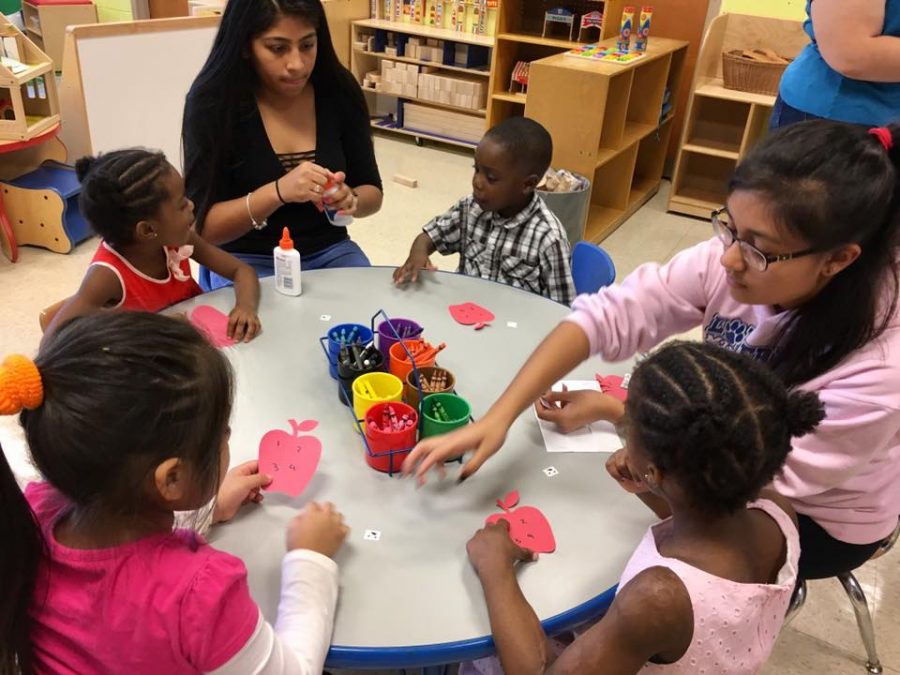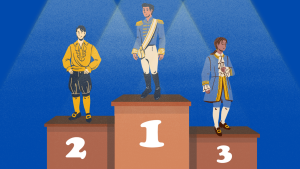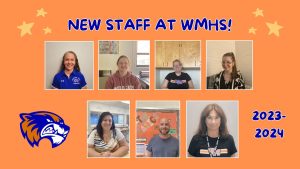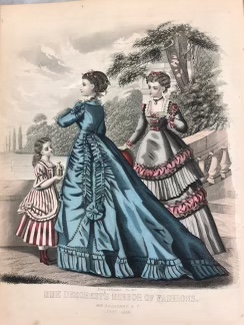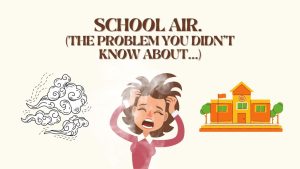Child development introduces teenagers to careers in education
November 1, 2017
You may have walked past the child development class, with its banner hanging high in the hallway, or maybe you have seen children playing outside on the playground and wondered, “What do they do, exactly?”
Students taking child development learn about the development of children while running a preschool lab. Twelve preschoolers stay in their care from 8-11am, with 28 students in each class. This is the first year at Watkins Mill that freshmen can take the course.
During class, students are on five rotations: teaching, planning, observing, doing a research project and having Village Time. Preschoolers are separated into a red, green, yellow or blue group for rotations. There are nine rotations per period.
The program lasts three years including an internship. The third year and internship are often taken together. Second-year students start tracking the development of a single preschooler. Third-year students work as administrators, such as by keeping records and doing paperwork.
Child development is “not just hanging out and chilling out with your friends and getting an easy A. It’s an introduction to a career that a lot of people find rewarding,” child development teacher Melissa Cloyd said.
“I enjoy getting a head start in what I want to do in the future,” junior Leyla Mendez said.
Montgomery County Public Schools recently hired 28 teachers that completed the child development program four years ago at Sherwood High School. “I would like to see some kids from Watkins Mill come out of here and go into teaching for MCPS,” Cloyd added.
“I had a student…last year, they just put her in [child development]. She didn’t want to be in this class. And then through the year, she started to see that this could be something for her. And now this year she’s applying to college to become an educator,” Cloyd added.
“I was a preschooler here in child development, so this is also me giving back to the school as well,” Mendez added.
“A lot of students appreciate [that] they get to be a difference-maker…We’re not just doing something for ourselves, we’re also doing something to serve some people in the community,” Cloyd added.



